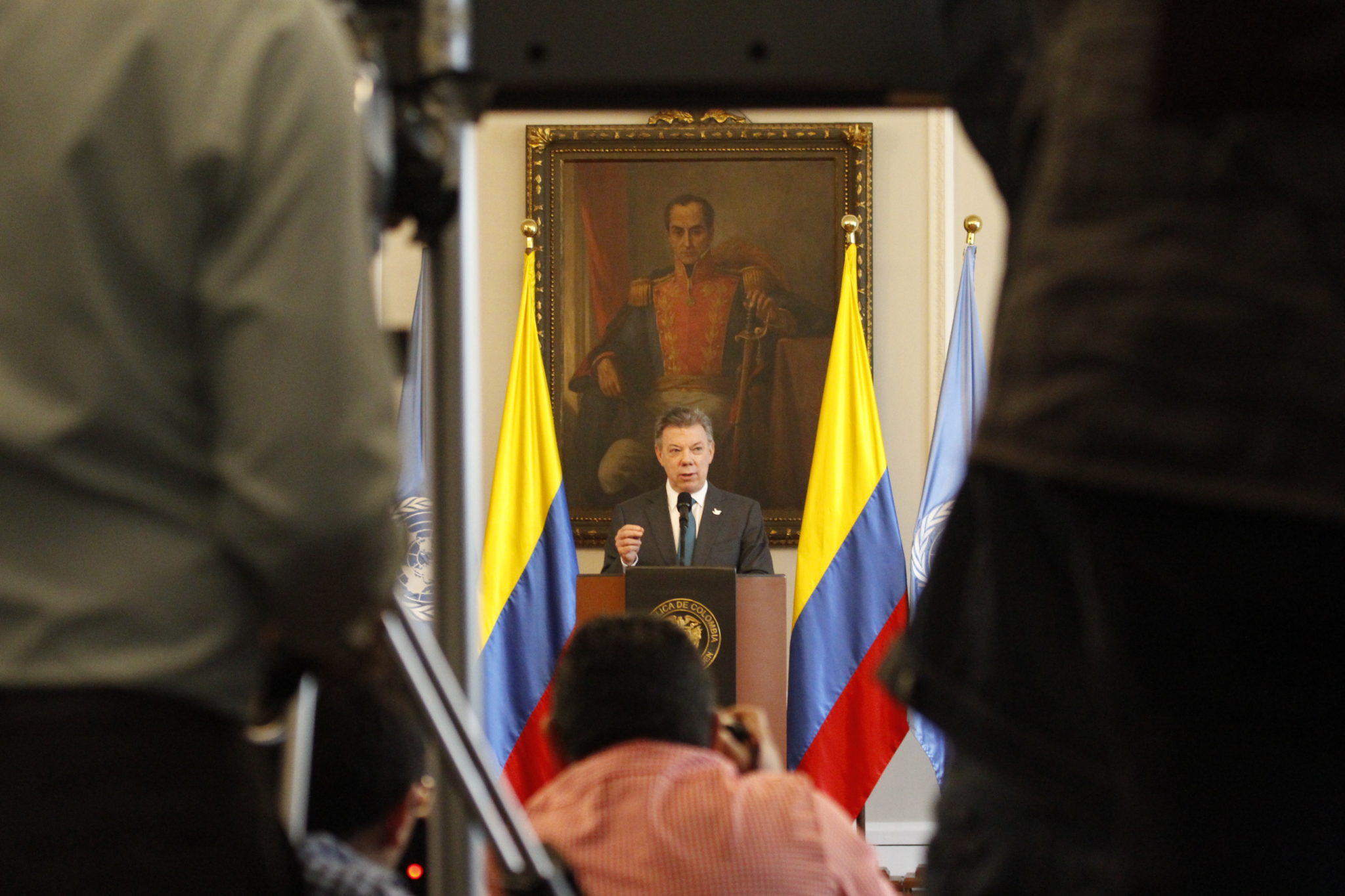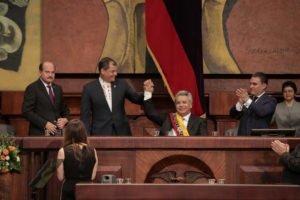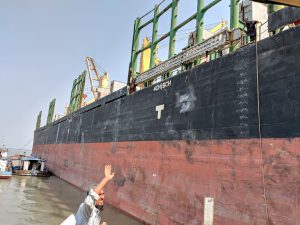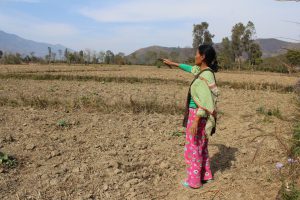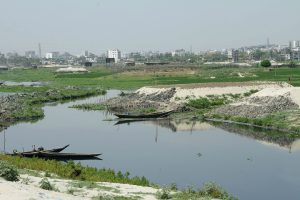Within the space of a year, citizens from 11 Latin American and Caribbean countries will elect new presidents that are likely to forge even closer ties with China.
The reason for greater cooperation, experts say, is a region-wide trend towards a ‘neoliberal’ economic model that originated in the US and Europe and promotes the deregulation of industrial sectors such as mining – upon which relations with China are based.
“We can already see this trend in administrations like [Mauricio] Macri’s in Argentina, Lenin Moreno in Ecuador, and the return of [Sebastián] Piñera in Chile,” said to Diálogo Chino Margarita Flórez of Colombian non-government organisation Ambiente y Sociedad (Environment and Society).
Even the left-wing governments that preceded these were neoliberals, who include openness to foreign capital and a trade surplus in their economic policies. “There have been no barriers to oil drilling or use of any other type of natural resource in any progressive government,” Flórez said, warning of the dire social and environmental consequences.
This policy orientation matches China’s interest in investing in public works and continuing to extract raw materials.
Election year
The current wave of Latin American presidential elections began in November last year with the disputed election of incumbent Juan Orlando Hernandez in Honduras. Chile followed in December, with the return of the businessman Sebastián Piñera, who will take office on March 11. Also in March, and for the first time in 60 years, Cubans may see someone outside the Castro family assume power.
China has had to adapt to the ideological and political changes in Latin America and the Caribbean because it benefits from the region
In April, Costa Rica will hold a second round of elections. Paraguay, which does not have diplomatic relations with China, will also elect its president and troubled Venezuela has set a date of April 22. Voters will choose a president for the Caribbean island of Barbados in May, while Colombia will hold its first presidential election with the participation of decommissioned guerrilla group FARC, which is now a political party of the same acronym – the Common Alternative Revolutionary Force (in English). On July 1 Mexico will elect a new president, and Brazil will hold first round of elections on October 2.
“China has more experience dealing with leaders from both left and right (or in between) from a number of countries and so are likely to be able to engage in their preferred ‘pragmatic’ style,” said to Diálogo Chino Matt Ferchen of the Carnegie-Tsinghua Centre for Global Policy in Beijing. Ferchen added that perhaps the more important issue is the quality of governance and that this is a crucial yet complicated issue in almost all of the countries with upcoming elections.
According to Ferchen, China has yet to show a deep understanding of these governance challenges and instead mostly offers “development” based engagement through trade, investment and loans. “Maybe that’s better than a country that seeks to deeply involve itself in the affairs of others, but it also limits the breadth and depth of relations to mostly commercial matters.”
Margaret Myers, director of the China and Latin America programme at think tank the Inter-American Dialogue said China has had to adapt to the ideological and political changes in Latin America and the Caribbean because it benefits from the region.
“Beijing wants to expand foreign trade, employ reserves and excess capacity, and also implement its businesses in construction and other areas,” she told Diálogo Chino.
Loans and agreements
Most of the countries holding elections feature highly on the list of recipients of Chinese loans. According to the Inter-American Dialogue, China Development Bank and the China Export-Import Bank have lent more than US$ 141 billion to companies and governments in the region, by far outpacing the World Bank and the Inter-American Development Bank.
“The volume and conditions of loans made by the Chinese banks have created a relationship of dependency, without room for future governments to manoeuvre. The multilateral banks do not have the economic capacity to meet the high demand for financing in more developed economies in the region,” said Paulina Garzón, director of the China-Latin American Initiative for Sustainable Investments (IISCAL).
“China has a well-planned long term strategy to strengthen its relationship with Latin America and the Caribbean, and has created the instruments needed to implement this strategy, such as, for example, bilateral cooperation accords, the China-CELAC cooperation plan, [and] mechanisms for regional and bilateral dialogues,” Garzón added to Diálogo Chino.
China’s largest debtor is Venezuela, which owes US$62 billion to be repaid in oil revenues, according to an agreement signed with former president Hugo Chávez. His chosen successor, President Nicolás Maduro, is expected to be re-elected, amid an expected boycott from the opposition, which alleges there will be fraud.
US$37 billion
China has invested into Latin America as of 2015
China’s second-largest borrower is Brazil, with a US$36.8 billion debt to China, according to the Inter-American Dialogue. China has invested more in the continent’s largest economy than any other, some US$37 billion as of 2015, according to data from the Brazil-China Business Council.
In October, Brazilians will elect a new president and the relationship with China is expected to grow even more, according to Luiz Augusto de Castro Neves, vice president of think tank the Brazilian Centre for International Relations (CEBRI).
“China is looking to ensure supply for its needs: oil, gas, raw materials, investments in infrastructure, because Brazilian infrastructure is very precarious and is a burden on productivity. This will be good for us and will be good for China, which is our main importer,” said to Diálogo Chino Castro Neves, also a former Brazilian ambassador to China.
“We all know that, with this actor (China), there needs to be a connection. In one way or another, the models that exist in the region will look for integration, whether bilateral, on a sub-regional level – as in the case of the Pacific Alliance – or regional,” said to Diálogo Chino Fernando Reyes Matta, director of the Latin American Centre for China Studies at Chile’s Andrés Bello University.
Reyes Matta is a former Chilean ambassador to China, and cited Chile as an example of continuity and even closer relations with China. President-elect Piñera was elected has already met with Chinese Foreign Minister Wang Yi.
“Regardless of which political parties take power this year, China will continue to be an attractive partner for for the region. If relations with the U.S. fail to improve, China could establish an even stronger foothold in the region,” said to Diálogo Chino Guy Edwards, co-director of the Climate and Development Lab at Brown University. “If relations with the US do not improve, China could establish an even stronger point of support in the region,” he added.
One key factor, according to Edwards, is the extent to which China is willing to demonstrate its interest in diversifying trade and financial ties with the region, which up to this point have been concentrated on natural resources.
He said that “a greater focus on Latin America’s need for investment in sustainable infrastructure including in renewable energy and electric public transport could be a game changer for China-LAC relations and take an important step towards aligning their partnerships with the Paris Agreement and the Sustainable Development Goals.
